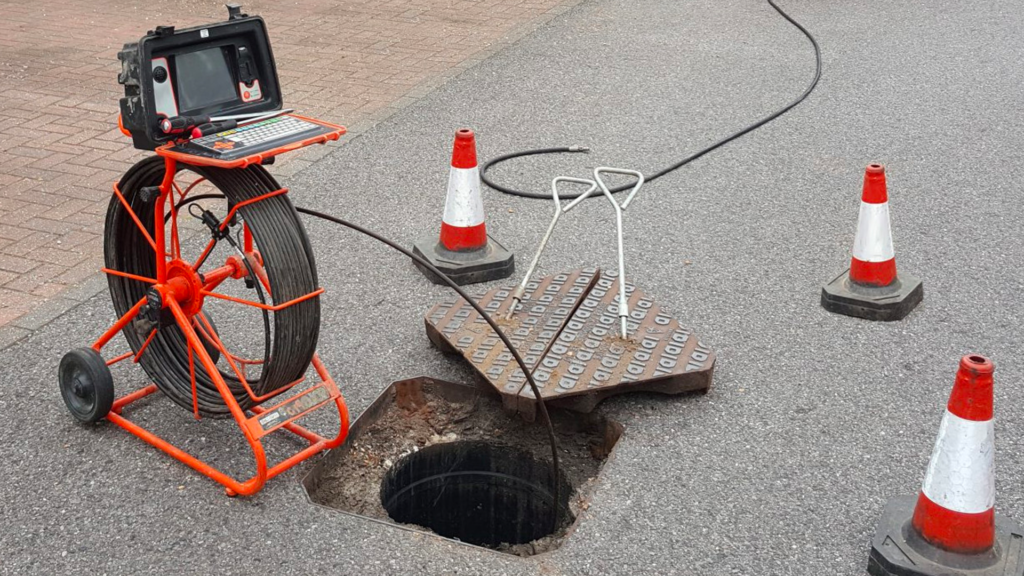The 7-Minute Rule for Reclaim Waste
The 7-Minute Rule for Reclaim Waste
Blog Article
3 Simple Techniques For Reclaim Waste
Table of ContentsWhat Does Reclaim Waste Do?Top Guidelines Of Reclaim WasteThe Best Guide To Reclaim WasteReclaim Waste Can Be Fun For Everyone5 Simple Techniques For Reclaim WasteWhat Does Reclaim Waste Do?

Never place hazardous substances down sinks, toilets or stormwater drains Compounds including gasoline, oil, oil, chemicals and herbicides, and solvents such as paint strippers must not be poured down sinks, commodes or stormwater drains pipes. These materials are hard to remove in the sewer treatment process and cause contamination problems in our local waterways.

Liquid waste is a term that covers a broad variety of materials, there's a great reason why leaving its disposal to the experts is suggested. Fluid waste is non-solid material that has no additional usage and should be dealt with and taken care of according to neighborhood, state and federal regulations.
The Reclaim Waste Ideas
Although instances of fluid waste can include wastewater, fats, oils or grease, utilized oil, liquids, solids, gases or sludges and hazardous home liquids, there are some that are thought about to be much more dangerous than others when it concerns the setting and the health and wellness of pets and human beings alike. It's consequently that each state and area have stringent regulations connected to liquid waste monitoring.
Fluid waste can be stored in holding containers or packaged in drums, intermediate mass containers or authorized little containers prior to either being treated or gotten rid of by means of outsourced vacuum vehicles. Given the nature of the products, liquid waste can not enter the general waste stream and there are rigorous regulations on just how to dispose of it appropriately.
(https://sitereport.netcraft.com/?url=https://reclaimwaste.com.au)Depending on a resolution of the degree of danger, it might be needed to remediate those sites. Additionally, harmful liquid chemical wastes are controlled waste and must be tracked according to the state waste legislation. Under the chain of custody and duties, owners are accountable and responsible for waste created by a service.
Among the core applications for superabsorbent polymers (SAPs) is liquid waste solidification. liquid waste disposal melbourne. SAPs are used by waste management experts to stop possibly dangerous liquids from entering waterways, groundwater aquifers, and various other sensitive settings. Because liquids can quickly deliver pollutants into ecological receptors and potentially add to geotechnical failures, liquid wastes are virtually constantly restricted from disposal in land fills
All about Reclaim Waste
Generally, cost-free fluids are fluids that separate from the solid part of waste material. Liquid waste can include the following: HDD mud and cuttings Landfill leachate Wastewater treatment sludge & biosolids Dredged sediments Oil and gas drill cuttings Working out pond filth Hydro Excavation slurry Coal burning residuals/ash Container base sludge Concrete grinding/polishing slurry Associated Short article: For a sensible instance of cost-free liquids separating from waste material, think about the following scenario: A waste monitoring service provider lots a dump vehicle with sludge from a wastewater therapy plant's aeration container, throughout a regular maintenance occasion.
Nonetheless, when the motorist comes to the garbage dump, he notices water check that seeping from the sludge and putting from the dump truck. The tons was rejected by the land fill and the motorist was required to get rid of the waste as a liquid waste at an unique facility, which increased the disposal costs greatly.
We likewise require to be accountable for the correct disposal of our waste materials. It is not sufficient that we pay waste disposal companies to take treatment of our rubbish.
The Ultimate Guide To Reclaim Waste

Segregating your waste can begin inside the home. Set apart dry and liquid waste as well as edible waste, naturally degradable and non-biodegradable materials.
Layer the base with dirt to take in the damp waste. Layer the compost with damp and completely dry waste as well as dirt to preserve a balance in between the wet and the dry.
Some Ideas on Reclaim Waste You Need To Know
Cover the garden compost bin. Once a week, add dirt on top of the compost. To promote faster disintegration, you can also add semi composted dirt to the compost. Maintain the garden compost. If you notice the smell is coming to be as well strong, include added papers and paper waste or add even more holes to the compost container to keep the balance of the waste products.
The world is sinking in rubbish and we can't pay for to be untrustworthy anymore. We have to act and reuse whatever we can wherever we can. We additionally need to be responsible for the proper disposal of our waste products. It is not enough that we pay garbage disposal companies to care for our rubbish.
Our waste, our responsibility. Have you ever wondered what occurs to your fluid waste after it's accumulated? Did you know that liquid waste can be recycled?
Reclaim Waste Can Be Fun For Anyone
Segregating your waste can begin inside the home. Segregate dry and liquid waste as well as edible waste, naturally degradable and non-biodegradable materials.
Layer the base with dirt to take in the wet waste - liquid waste removal. Layer the compost with wet and completely dry waste as well as dirt to maintain an equilibrium in between the wet and the dry.
Cover the compost container. Once a week, include soil on top of the compost. To help with faster decomposition, you can additionally add semi composted soil to the garden compost. Preserve the compost. If you see the odor is becoming also strong, include additional newspapers and paper waste or include more openings to the compost container to keep the balance of the waste products.
Report this page